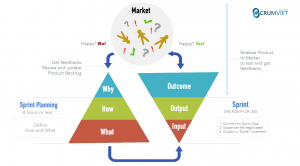Unless you’ve been hiding under a rock for the last decade or so, it’s been hard to ignore the game-changing power that YouTube and other video sharing sites have brought to the world of digital marketing. And especially when one considers the value offered by digital videos in comparison to the cost of running traditional television advertisements, it is hardly surprising that more and more companies—big and small—are implementing digital video as part of their content marketing strategy.
And while no doubt every small company would love to see its next content video go viral and get millions of views (which would certainly be fantastic for business), the truth is that not every video needs to achieve such heights to become a valuable part of your content marketing strategy. Surveys have found that Internet videos greatly increase potential customer’s understanding of products or services, with nearly four out of every five viewers managing to recall the content of such videos.
As TV and other traditional advertising methods continue to be left behind thanks to DVR, YouTube and Netflix, making a video footprint in the digital world is more important than ever. Here’s how you can successfully implement video into your content marketing to drive Web traffic, boost SEO and lead to greater overall success.
Production Quality and Content Strategy

The advertising agency I work for frequently posts videos that allow us to explain a few digital marketing fundamentals.
Of course, to have any possibility of success in the production of your content videos, you need to have a sound strategy in place. Chances are, your customers aren’t going to be interested in a low-quality talking heads video that doesn’t do much more than say “Our company is great; come buy from us.”
Successful videos begin with smart planning, carefully tailored to match your company and its unique audience. After all, the audience for a relationship counselor will (usually) be different than the audience for a trucking company. Knowing your audience is the first step in knowing what type of content would be the most interesting, useful, and likely to generate clicks. So while a goofy parody music video might work great for an entertainment company, chances are it wouldn’t be nearly as effective for a wealth management firm (which would probably be better off doing a series of weekly finance tips).
Carefully examine your script and goals before you start filming. Is the video meant to inform customers of an upcoming product launch? Is it supposed to be an informative supplement to your service? Or is it simply a behind-the-scenes video? Quicksprout recommends that most content videos be kept between two and three minutes in length, which means that whatever your video content is, the script needs to be clear, crisp and concise so as to get the point across quickly and effectively.
Generally speaking, the best content marketing videos are going to provide useful, engaging information that is relevant to your company’s target audience. Whether or not to incorporate humor, flashy effects and other elements is largely dependent on your target market, but at the base of every video there should be the goal of providing valuable information related to your industry. Be it lawn-care tips or technology how-to’s, be sure that you are able to offer a unique and useful perspective that will provide value to your customers.
A great concept and script will do you little good, however, if the overall video production quality is not very good. Believe it or not, there’s more to making a good video than just hitting “record” on a video camera. There’s sound recording, lighting, editing, digital effects and many other elements that all go in to making sure your video looks polished and professional. Not to mention, gaining that outside perspective can also help ensure that no truly terrible concepts work their way through the pipeline. Do you want your videos to look like this, or would you prefer them looking like this?
Posting and Sharing Effectively
However, it doesn’t do much good to simply post a video to YouTube and hope that the views come flowing in. At least initially, you will likely need to promote your video content through social media and other outlets to ensure that your existing base of followers is aware of the video.
First and foremost, these videos should be embedded on your website so that online visitors will be able to easily view the content and spend more time on your site. Creating a short blog post to accompany each video piece is a good way to make your website more robust and show Google that your site provides quality information (which will also boost your SEO rankings).
But don’t stop there. You should take full advantage of Facebook, Twitter, LinkedIn, Pinterest and email subscriber lists to make sure that your already-existing audience is fully aware of the great video content you’ve just put out (and if you have an email list, mentioning the video in the subject line of your message is also more likely to get subscribers to open that email in the first place). To build those initial views, sharing through your company’s social media accounts is a must, as well as using your own personal accounts, where your friends should at least be somewhat aware of the company you work for/represent.
Naturally, you want to use these videos to expand your audience beyond that group that is already following your company and its content. As such, it is important to have a call to action (a request to visit your website to learn more, or to subscribe to your YouTube channel) to go along with video content. It’s often a good idea to include this in the end of the video as well as urge others to share your video content through social media.
Good public relations tactics are another solid way to gain additional traction for your video. Whether it be a press release announcing the launch of your new video series, reaching out to industry bloggers or even local news media, these actions can garner valuable (not to mention authoritative and influential) free press for your video content and your business.
Even with these public relations tactics in place, however, it is important to remember the SEO fundamentals that will help your video be picked up by search engines and draw in new viewers. Make sure all video content is appropriately tagged, and that video titles and descriptions utilize relevant keywords so search engines will be able to determine what your video is about. Include a link to your website (related blog posts are best) in the video description to also provide an SEO boost to your website.
Does it Work?
If you’ve taken the time and effort to plan an effective video marketing strategy, invested in quality video production techniques to make the best-looking video possible and shared your video through social media and blogs, you are well on your way to growing your viewership and increasing your business.
Entrepreneur reported that a Digital Sherpa survey found several heartening statistics for those who question whether or not implementing video as part of their content marketing strategy is worth it.
Do any of these results make video sound like a worthwhile investment? “After viewing a video, 75 percent of users check out a marketer’s website…Website visitors are 64 percent more inclined to purchase a product on an online retail site after watching a video.”
While it may require more time and effort to create a series of content marketing videos than it does to write articles or blog posts, videos are clearly one of the most effective ways to drive new business to your website. Video is more memorable, more likely to be viewed in its entirety and more likely to generate those valuable clicks and backlinks that lead customers to your website.
No content marketing strategy is complete without video. Whether you have the capabilities to handle video production in-house or need to hire outside help, the boost to your overall digital marketing and SEO success is well worth the investment.
Digital & Social Articles on Business 2 Community(107)
Report Post







